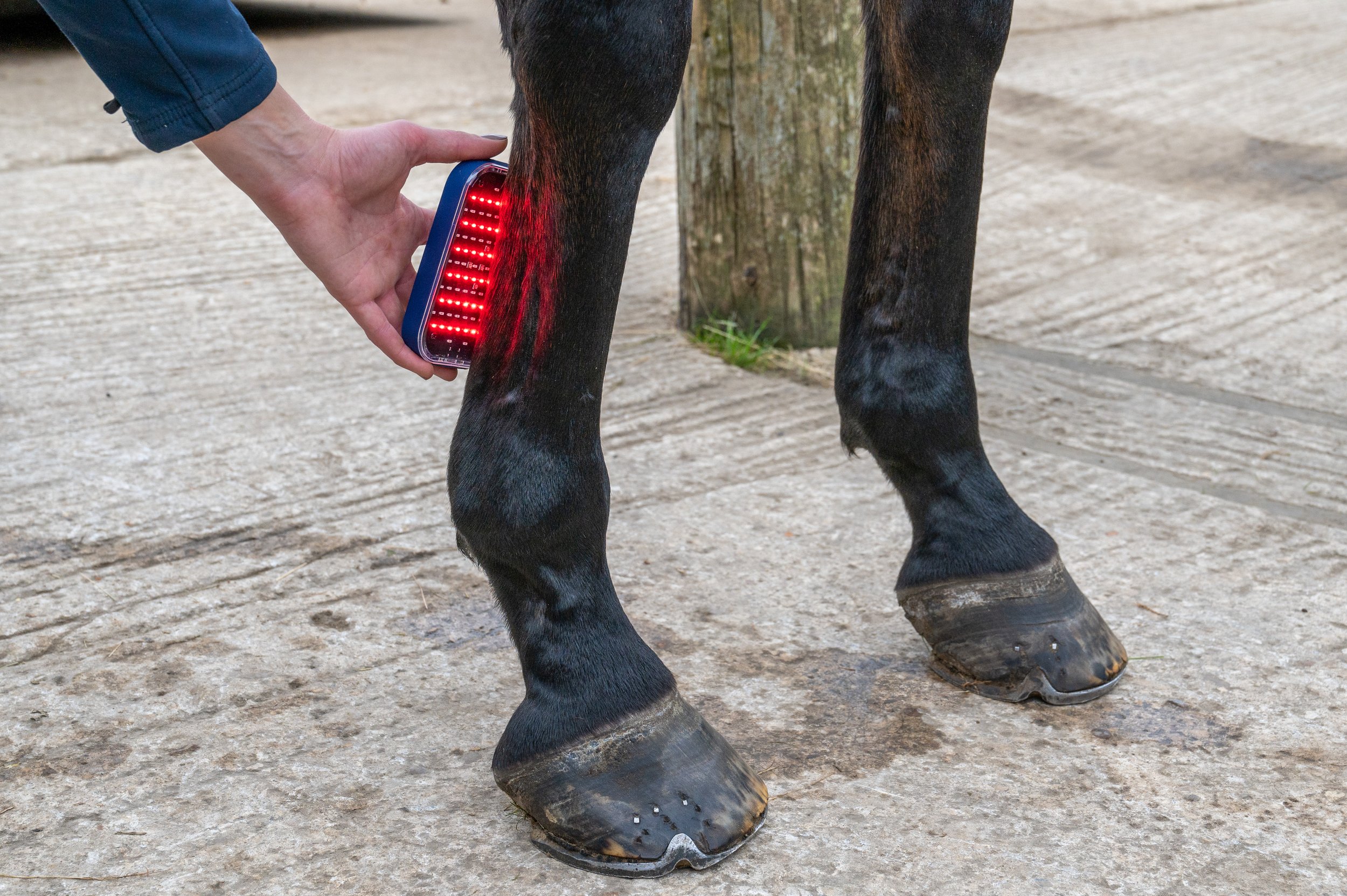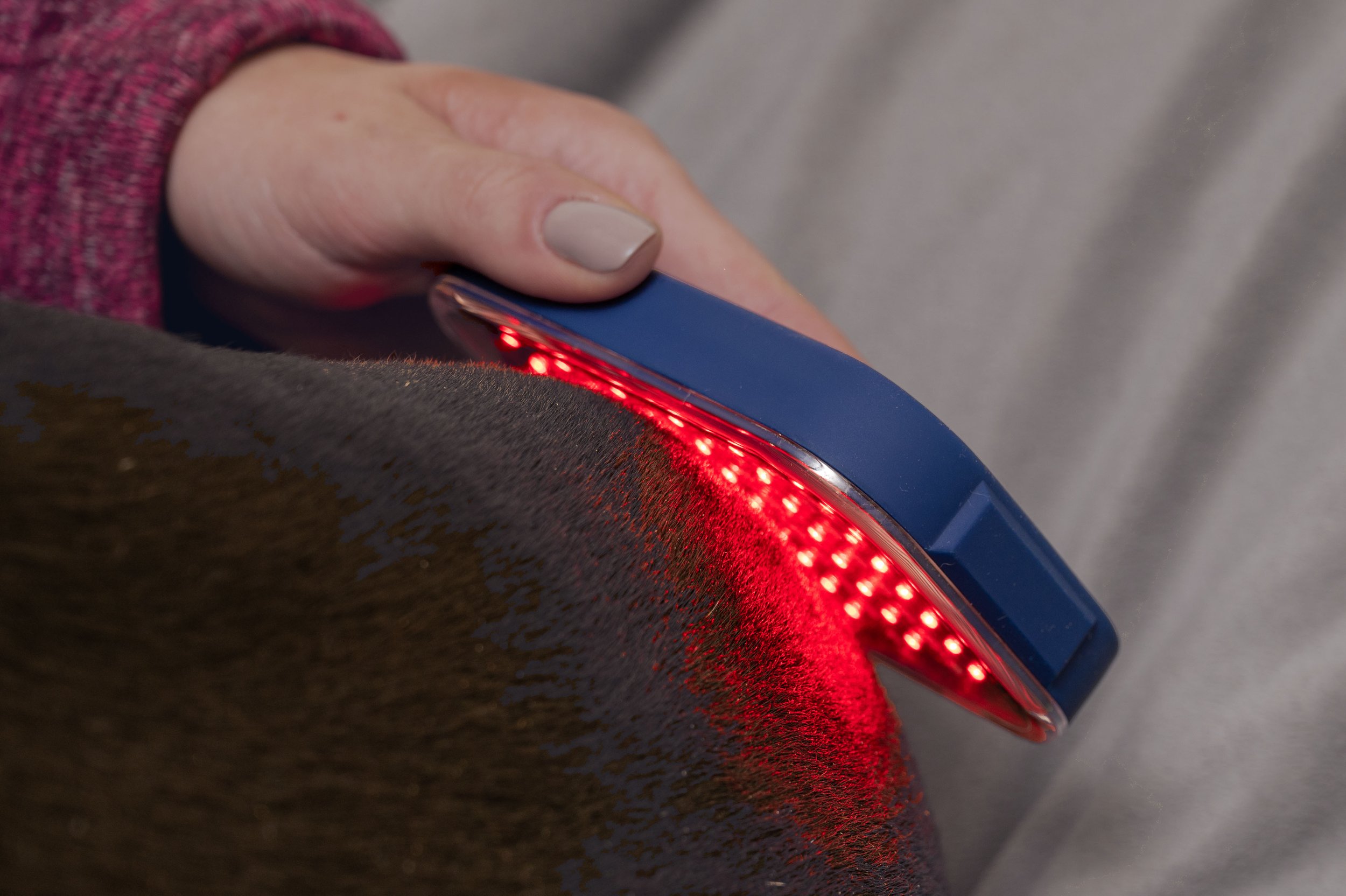
How Lumina Works
Non-invasive treatment to support healing and reduce infection.
Optimus Lumina is a non-invasive, drug-free device that uses red, infrared and blue light to assist in the healing of injuries, wounds and infections. Designed by physiotherapists, it provides a complementary therapy to other treatments and interventions, maximising patient care.
Treating the affected area with red and infrared light therapy, will help recovery by increasing circulation, bringing nutrients to the area and aiding better metabolic waste removal. Red light therapy also relieves pain and releases endorphins by stimulating acupuncture points. When applied, blue light therapy works by limiting the growth of bacteria, therefore, reducing the risk of infection.
How it helps
There are three main benefits of using red, infrared and blue light therapy to maximise patient care.
The Optimus Lumina is proven to relax muscle tension and spasms which relieves pain, inflammation and chronic conditions such as arthritis and overuse injuries. Using the device gives pain relief through red light therapy releasing endorphins (the body’s natural pain killing chemicals) and serotonin (the key chemical for stabilising mood and enhancing feelings of wellbeing).
Blue light therapy has a damaging biochemical effect on bacterial cells that causes them to die. This makes it very effective for decontaminating the skin. Avoiding infection and decreasing the bacterial load on wounds already infected.
Add red light to the equation and you have the perfect tool to treat post-operative wounds and support treatment of bacterial infections.
If you would like to know more - download our handy factsheet.

Scientific research
Research on red light therapy dates back over 100 years: in 1903, Danish scientist Niels Ryberg Finsen received a Nobel Prize for his work on the treatment of tuburculosis by using ultraviolet light. For a time, light therapy treatment was widely used before the introduction of antibiotics.
For more recent information on how red and blue light phototherapy has been used to treat a range of conditions, we’ve listed some helpful links to medical research. More studies exist on humans, but there are a growing number of studies on horses and small animals.
Reducing fatigue and improving muscle function
To understand how blue and red light phototherapy helps reduce muscle fatigue - read Justin H Rigby and Austin M Hagan’s recent paper:
A Novel Blue-Red Photobiomodulation Therapy Patch Effects on a Repetitive Elbow-Flexion Fatigue Task.
Reducing inflammation with red and infrared light therapy
Michael R Hamblin’s article on Mechanisms and applications of the anti-inflammatory effects of photobiomodulation explores how phototherapy can reduce inflammation in a range of conditions including disorders of the joints and traumatic injuries.
The benefits of low level light therapy on skin
To understand more about the restorative benefits of low level laser light therapy on skin, visit this 2013 article on: Low-Level Laser (Light) Therapy (LLLT) in Skin: Stimulating, Healing, Restoring.
The antimicrobial and antibacterial effect of blue light
For a recent article on decontaminating and treating wounds with blue light - visit the ASM Journal: Antibacterial Activity of Blue Light against Nosocomial Wound Pathogens Growing Planktonically and as Mature Biofilms.
Red light phototherapy and equine wound healing
To explore how low level laser therapy supports an increased rate of wound healing, read: Equine wound healing: influence of low level laser therapy on an equine metacarpal wound healing model.
Supporting pets living with chronic conditions
This study explores how LEDs could be used non-invasively in the management of osteoarthritis of the knee: Effect of light-emitting diode (LED) therapy on the development of osteoarthritis (OA) in a rabbit model.

How to use Lumina
At Optimus, we believe great things don’t need to be complicated.
Less is more, and we recommend small and regular interventions as part of a planned programme of care, developed in consultation with your vet or animal practitioner.
Simply select the therapy required by pressing and holding the red light button [R], until the light turns on, for red and infrared, or blue light button [B] for blue light phototherapy,
Place the device against clean skin on the affected area for the recommended treatment time. The red/blue light indicator will be lit at all times when the device is in operation. At the end of treatment, press and hold the red [R] or blue [B] button to switch the device off.

